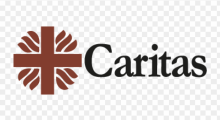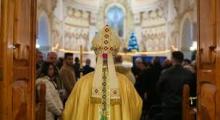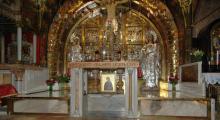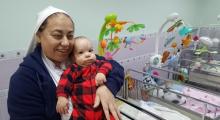Issued by the Catholic Center for Studies and Media - Jordan. Editor-in-chief Fr. Rif'at Bader - موقع أبونا abouna.org
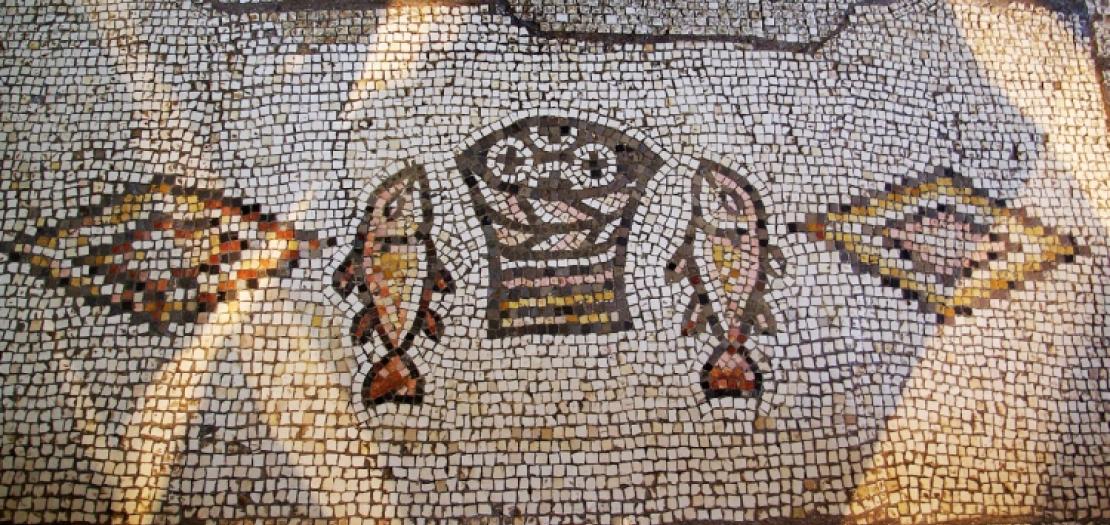
Following is the text of meditation by Cardinal Pierbattista Pizzaballa, Latin Patriarch of Jerusalem: The 17th Sunday of ordinary time, dated July 28, 2024:
The Sunday readings from the Gospel of Mark for Year B, which we've been exploring, will come to a pause. We will now delve into chapter six of the Gospel of John, commonly known as the chapter of the bread of life.
This chapter is rich in references and symbols; hence, we will linger here to understand its core message.
The initial reference provides us with the essential understanding and structure of the text, centered around the exodus and, consequently, the Passover. Jesus crosses over and a great crowd follows him, (John 6:1) much like the Israelites who followed Moses out of the land of slavery to become the Lord's people.
Verse 4 confirms that Passover is the focus of this event: “The Jewish feast of Passover was near.” (John 6:4)
A second reference is the mountain, (John. 6:3) an important symbol related to the Exodus. On their journey through the desert, the Israelites arrived at Mount Sinai, where God made a covenant with them.
The third cross-reference is the grass. While it may seem like an unnecessary detail: what does it change that there is grass, or that there is not? Next to important symbols, such as the mountain, and the bread, what can the fact that there is grass possibly mean?
Grass signifies abundance in several passages in the First Testament, all related to the abundance of food and water. God leads his people there as he is the good shepherd who leads his flock to green abundant pastures. (cf. Psalm 23)
Finally, the central symbol is bread. During the Exodus, the question of who would feed the people in the desert arose, and God provided manna. In today's passage, there is a lack of bread, and the crowd is large and hungry. Jesus asks the disciples where they can buy bread to feed everyone. (John 6:5)
Just as in the desert, the Lord will provide, but here the bread comes from a humble gift—a boy's small offering. (John 6:7) Though it seems insufficient, in Jesus' hands, it becomes enough.
Yet with a fundamental difference, in the desert, bread was manna, which came down from heaven. It was freely given to everyone every day, enough to go out and collect it, without taking too much because one had to learn to trust in the God who is a father and provides every day.
The disproportion is obvious and clearly says that that little bread could never be enough for everyone. It is too few, but it is also utterly necessary.
The bread that Jesus offers his own is the bread of fellowship and fraternity, which is the very life of children.
It cannot be bought from anywhere, (John 6:7) and no amount of money would be enough to buy it. But one obtains it through faith, by entrusting to the Lord all the little one is and has, knowing that in his hands the gift is multiplied. Knowing that every gesture of love, however small, is enough to nourish the lives of many.
There is also a verb on which it is important to dwell, and it is the verb sit: it is repeated twice, in verse 10, and it is an important verb because it reveals the true meaning of the passage, which is the Eucharistic.
For two reasons: The first is that this verb is used primarily to indicate the act of setting oneself at the table. Not just any sitting down, but the sitting down to participate in a banquet. This whole crowd, then, represents all the people who are called to participate in the great banquet of the Kingdom, the one that God offers for all peoples on the high mountain of the Lord of hosts. (cf. Is 25:6-10)
Not only that. This verb is the same one the evangelist John uses in the account of the Last Supper, (John 13:25) to describe his gesture of “reclining” on Jesus' chest.
That boy's gesture of love prefigures another gesture of love, that of Jesus Himself, who will give his life in his hands, give thanks to the Father, and break it for all.
He will place it in the hands of his disciples so that they may distribute it to every man, door to door as we saw in the missionary discourse two Sundays ago. Because the crowds are always large, they are hungry for life.


